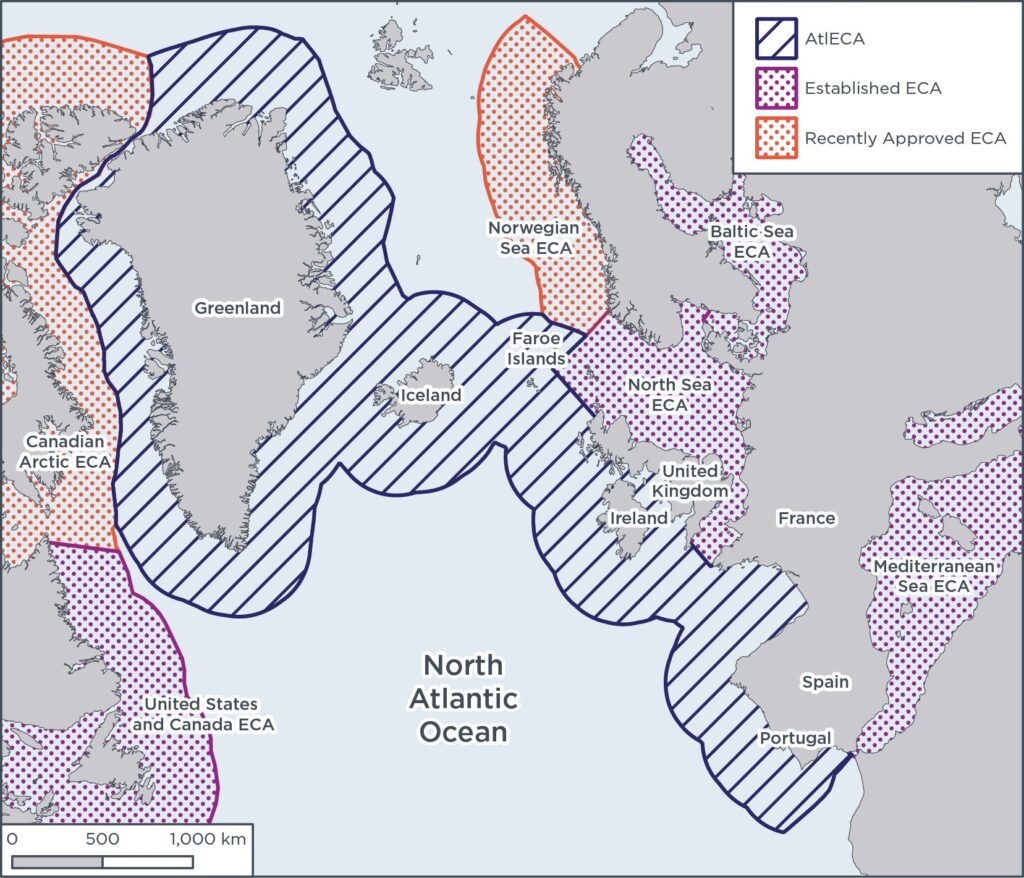© Martha de Jong-Lantink / Flickr
Features
IMO approves new NE Atlantic emission control area
- Governance
- Shipping
Last week, the International Maritime Organization (IMO) held the 83rd session of the Maritime Environmental Protection Committee (MEPC) in London. While the main focus was on setting binding greenhouse gas emission reduction targets for the global shipping sector, one of the major outcomes was the approval of a new emission control area (ECA) in the North East Atlantic Ocean.
This new NE Atlantic ECA, to be implemented by 2027, will become the largest of its kind globally. It will reduce emissions of sulphur oxide (SOx), particulate matter (PM), and nitrogen oxide (NOx) from ships in the territorial seas and Exclusive Economic Zones (EEZ) of Greenland, France, Iceland, Ireland, Portugal, Spain, the United Kingdom and the Faroes.
Linking existing ECAs across the region
Among the strongest advantages of this newly approved emission control area is that it closes the gap between the existing ECAs in the North and Baltic Sea and the Mediterranean, creating a nearly continuous zone of reduced shipping emissions. It will also connect to newly approved ECAs in the Canadian Arctic and Norwegian Sea, which are scheduled for implementation in 2026 and 2027 respectively. Together these ECAs will cover almost half of all Arctic coastal waters, improving air quality, protecting public health, and reducing environmental impacts from shipping across the region.
“It is not only about cleaner air,” said Luidmila Osipova, Senior Researcher for the International Council for Clean Transportation who led the environmental impact assessment of the NE Atlantic ECA. “It is about protecting the health of Indigenous communities who are directly exposed to shipping emissions and often face limited access to healthcare. At the same time, cutting black carbon emissions, a potent climate super-pollutant, would help slow Arctic warming.”
A step forward—but gaps remain
There is clear momentum behind expanding emission control measures in polar regions. These new ECAs will make a big difference in protecting Arctic waters from ship pollution. However, significant gaps remain: the territorial waters of Russia and the US are not covered by these agreements. Given the current political realities, it is unlikely that either government will follow the lead of Canada, Norway, and other European nations anytime soon, even though both countries have substantial coastal and Indigenous populations that are exposed to the impacts of shipping pollution.
While the establishment of these new ECAs is a major achievement, the ultimate goal should be mandatory regulation to reduce black carbon emissions across the entire Arctic and near-Arctic waters. This can be done by requiring ships to shift away from residual fuels like heavy fuel oil (HFO) and operate on cleaner alternatives such as distillate fuels.
You can find a summary of all MEPC 83 meeting outcomes, including the ECA decision and other developments, on the Clean Arctic Alliance website: Atlantic Shipping Emissions Cut Agreed, But IMO Scrubber Ban Delayed.
